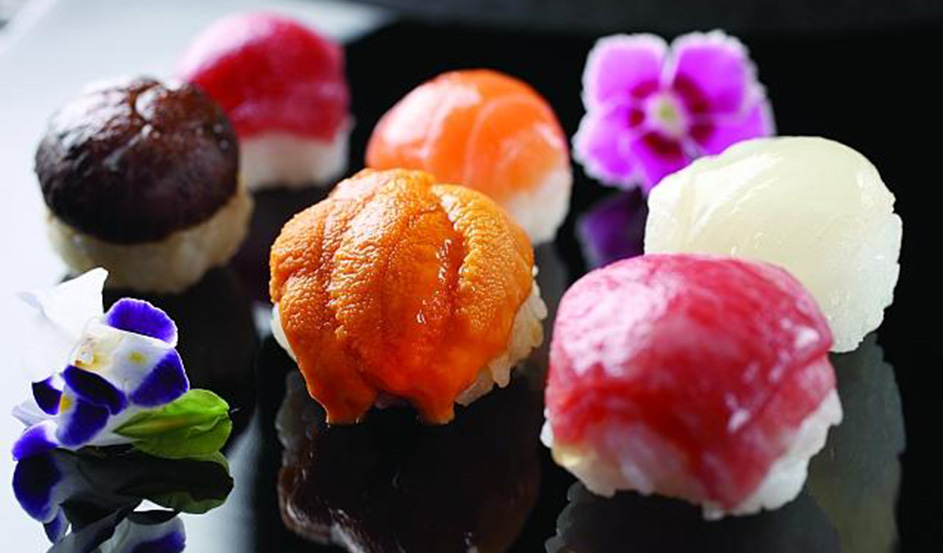
KAISEKI – THE ART OF JAPANESE DINING
It’s the start of a new year and Kitchen Theory are getting geared up for the next culinary inspiration which will influence our upcoming set of events in 2014 ; ‘Kaiseki’.
The term kaiseki comes all the way from the land of the rising sun; Japan. Kaiseki is also known as kaiseki-ryōri, both terms refer to a traditional Japanese multi-course dining experience which is most commonly associated with the city of Kyoto. Kaiseki menus typically consist of between 7 to 14 courses. This form of dining has a long history, steeped in tradition and ceremony which originate from the Japanese tea ceremony (known as cha-kaiseki).
Kaiseki is one of the most prestigious dining experiences in the world and has, at its core, a deep rooted set of philosophies and guidelines. Many of these guidelines have influenced western chefs’ approach to cuisine and the art of dining over a number of decades and resulted in major changes in the world of fine dining.
During the second half of the last century western chefs became increasingly interested by (what was at the time) the relatively unknown and highly secretive Japanese kitchen – complexity of the concepts and cultural/linguistic constraints make understanding some concepts difficult to fully appreciate. Many of the world’s top chefs began traveling to Japan (and continue to till today) to learn more about their culinary philosophies, techniques and ingredients. The results of what they saw and learnt have influenced several generations of chefs and are prevalent in today’s dining scene.
Tasting menus which are available at most fine dining restaurants around the world stem from the influence of kaiseki. It was only around the late 1960s and 1970s that western restaurants began offering ‘tasting menus’ – a series of smaller sized courses allowing the guest to explore a wide range of dishes, as opposed to the traditional ‘ala carte’ dining which was the standard offering till then. Western chefs were enamored by the idea of being able to show case their cuisine, skills, techniques and ingredients in such a form. In today’s restaurant scene it is difficult to find a fine dining restaurant which does not have a tasting menu, and even further there are some restaurants which only serve tasting menus – typically in 3, 6, 9 courses – although at the 3 Michelin Starred Fat Duck restaurant in London only one 14 course menu is available (special dietary requirements are accommodated for within the structure of the same menu.)
Deep rooted in the philosophy of kaiseki is the belief in seasonality and locality. You will be hard pushed to find a kaiseki menu which stays the same for longer than a week if not a day, as kaiseki is focused on eating what is in season at that moment and from what is grown where you are at that time. At the heart of this philosophy is the fact that ingredients are always at their tastiest, most vibrant, most flavorful, most aromatic and most nutritious when they are in season, also that the nutrients you receive from ingredients which are in season are most suited to your body’s requirements for that time of year and for the place you are in. Now you may be thinking this is nothing new, and that every TV celebrity chef is forever talking to us about seasonality and locally sourced produce, but this wasn’t the case just 50 or 60 years ago.
The wide spread use of the railway (around the turn of the 19th centaury) and its use as a method of transporting food around countries had a massive effect on how people ate; you no longer had to live next to the sea to eat fresh fish, fresh milk was assessable even if there was no farms close by and so on. In short; it made food which was not local more readily available. Science of course added much to this; pasteurization and refrigeration meant food could be stored for longer periods and transported over even greater distances. All of this impacted the way we eat until today (you can find asparagus, oranges and strawberries in your local supermarket regardless of the time of year or weather the country you live in has the right climate to grow them). So to get back to our point! It was the Japanese chefs and their philosophies/respect for seasonality and locality which reinvigorated western chefs with the notion of its importance and an appreciation for seasonal, local and organic foods which has since become more main stream and trickled down and become part of our every day vocabulary.
As well as tasting menus and the ethos of seasonality/locality, various other Japanese influences have found their way into western fine dining; an understanding of umami, the emphasis on food presentation and the use of crockery as part of the dish and its overall appeal (also; the use of different crockery for different courses). Japanese techniques, tools and ingredients found their way into the western kitchen. A greater focus on the multisensory appreciation of a dish (visual, sound, texture, temperature and aroma).
So back to where we started; originally, kaiseki comprised a bowl of miso soup and three side dishes; this is now instead the standard form of Japanese-style cuisine generally, referred to as a セット (setto, “set”). Kaiseki has since evolved to include an appetizer, sashimi, a simmered dish, a grilled dish, and a steamed course, in addition to other dishes at the discretion of the chef.
Sakizuke (先附): an appetizer similar to the French amuse-bouche.
- Hassun (八寸): the second course, which sets the seasonal theme. Typically one kind of sushi and several smaller side dishes.
- Mukōzuke (向付): a sliced dish of seasonal sashimi.
- Takiawase (煮合): vegetables served with meat, fish or tofu; the ingredients are simmered separately.
- Futamono (蓋物): a “lidded dish”; typically a soup.
- Yakimono (焼物): flame-broiled food (esp. fish);
- Su-zakana (酢肴): a small dish used to clean the palate, such as vegetables in vinegar; vinegared appetizer.
- Hiyashi-bachi (冷し鉢): served only in summer; chilled, lightly cooked vegetables.
- Naka-choko (中猪口): another palate-cleanser; may be a light, acidic soup.
- Shiizakana (強肴): a substantial dish, such as a hot pot.
- Gohan (御飯): a rice dish made with seasonal ingredients.
- Kō no mono (香の物): seasonal pickled vegetables.
- Tome-wan (止椀): a miso-based or vegetable soup served with rice.
- Mizumono (水物): a seasonal dessert; may be fruit, confection, ice cream, or cake.
So that is a very brief overview of Kaiseki; a beautifully artistic, philosophical and multisensory dining experience. It is these elements which we are using as inspiration for our next set of dining experiences.
‘Kaiseki’ by Kitchen Theory is a 9 course Japanese kaiseki inspired menu using seasonal British ingredients with a blend Japanese staples all brought together with the use of traditional and modernist techniques. Dates for the events will be available by 17/01/14 find out more about our experimental dinners

